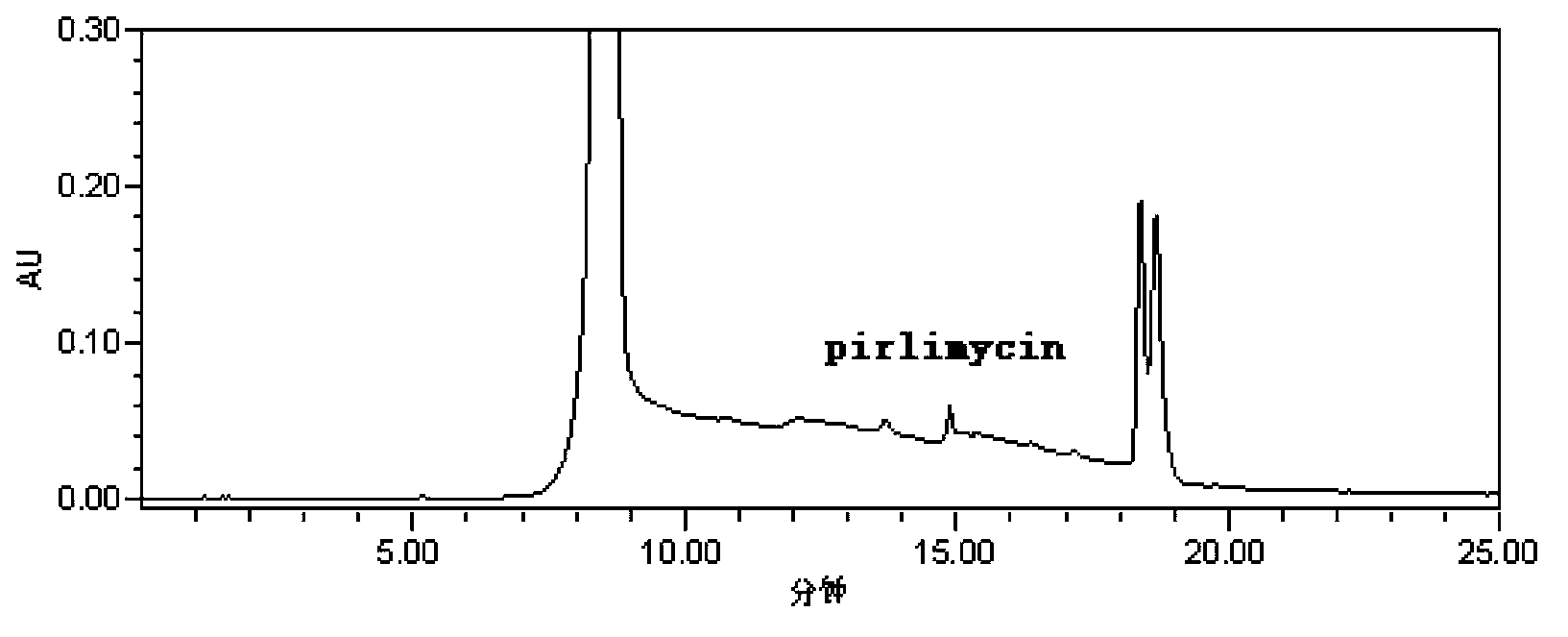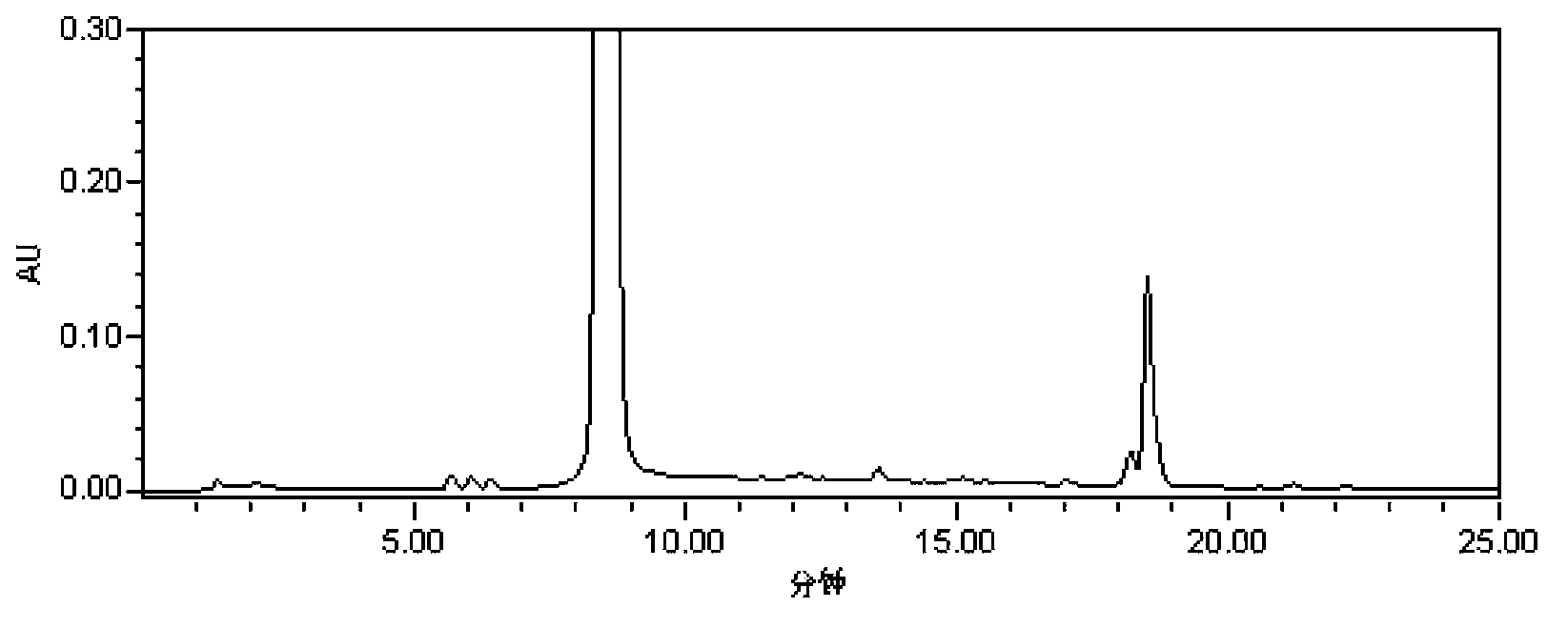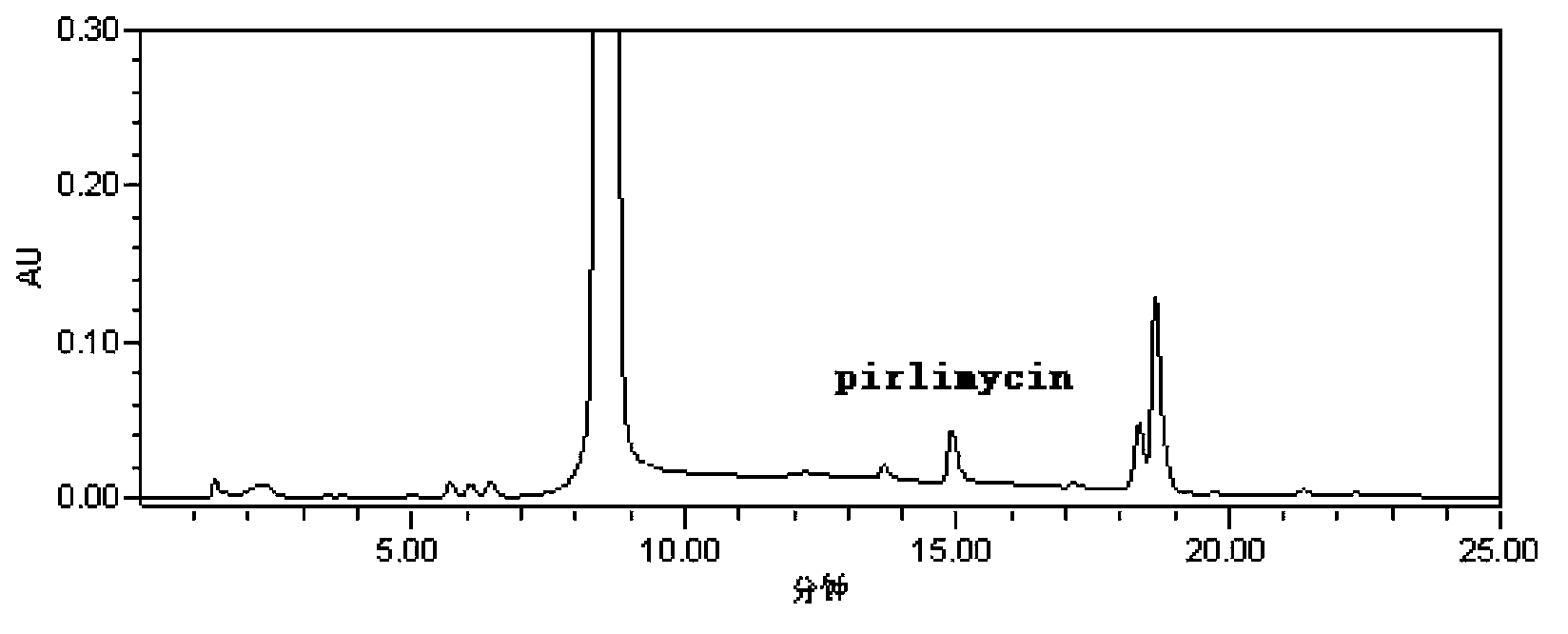Pirlimycin residue analysis method
A technique for analysis of pyrithycin and residues, which is applied in the field of analysis of residues of pyrithycin to achieve the effects of high ultraviolet absorption intensity, high fluorescence activity, and fast reaction speed
- Summary
- Abstract
- Description
- Claims
- Application Information
AI Technical Summary
Problems solved by technology
Method used
Image
Examples
Embodiment 1
[0041] Example 1: Derivatization reaction of secondary amino compound with 9-fluorenylmethyl chloroformate
[0042] (1) Derivatization reaction of pyrithycin and bromoacetylpyrene
[0043] Accurately weigh 10 mg of the reference substance of pyrithycin, dissolve it into a 10 mL volumetric flask with methanol, and prepare 1 mg / mL standard stock solution respectively. Accurately pipette an appropriate amount of standard working solution, and dilute it successively with methanol to concentrations of 5 μg / L, 10 μg / L, 20 μg / L, 50 μg / L, 100 μg / L, 200 μg / L, 500 μg / L, 1000 μg / L, 2000 μg / L L standard working solution. Accurately pipette 40 μL of standard working solution, add 80 μL of boric acid buffer in sequence (configuration method: accurately measure 0.38 g of sodium tetraborate, dissolve and dilute with water, adjust pH=9.0 with hydrochloric acid, and dilute to 100 mL volumetric flask) and 80 μL of derivatization Reagent (accurately weigh 26mg of 9-fluorenylmethyl chloroformate...
Embodiment 2
[0050] Embodiment 2: sample determination
[0051](1) Processing of samples
[0052] The bovine muscle, milk and bovine kidney were selected as the experimental samples, and the addition and recovery experiment of pilinomycin was carried out. Add an appropriate amount of standard solution to the blank sample, so that the concentration in the sample is LOQ, 1MRL, and 2MRL respectively (the specific concentration of each drug is shown in the table below), and the sample is tested after pretreatment. Repeat 5 samples for each concentration on the same day, calculate the recovery rate, and take the average value to calculate the intra-day coefficient of variation; repeat 5 days for each tissue, and calculate the average recovery rate.
[0053] Extraction: Accurately weigh 5g of fresh milk or thawed beef muscle and kidney samples and place them in a centrifuge tube, add 10mL of 1% formic acid acetonitrile, vortex and mix for 1min, centrifuge at 8000r / min for 10min, take out the su...
PUM
| Property | Measurement | Unit |
|---|---|---|
| length | aaaaa | aaaaa |
| particle diameter | aaaaa | aaaaa |
| recovery rate | aaaaa | aaaaa |
Abstract
Description
Claims
Application Information
 Login to View More
Login to View More - R&D
- Intellectual Property
- Life Sciences
- Materials
- Tech Scout
- Unparalleled Data Quality
- Higher Quality Content
- 60% Fewer Hallucinations
Browse by: Latest US Patents, China's latest patents, Technical Efficacy Thesaurus, Application Domain, Technology Topic, Popular Technical Reports.
© 2025 PatSnap. All rights reserved.Legal|Privacy policy|Modern Slavery Act Transparency Statement|Sitemap|About US| Contact US: help@patsnap.com



